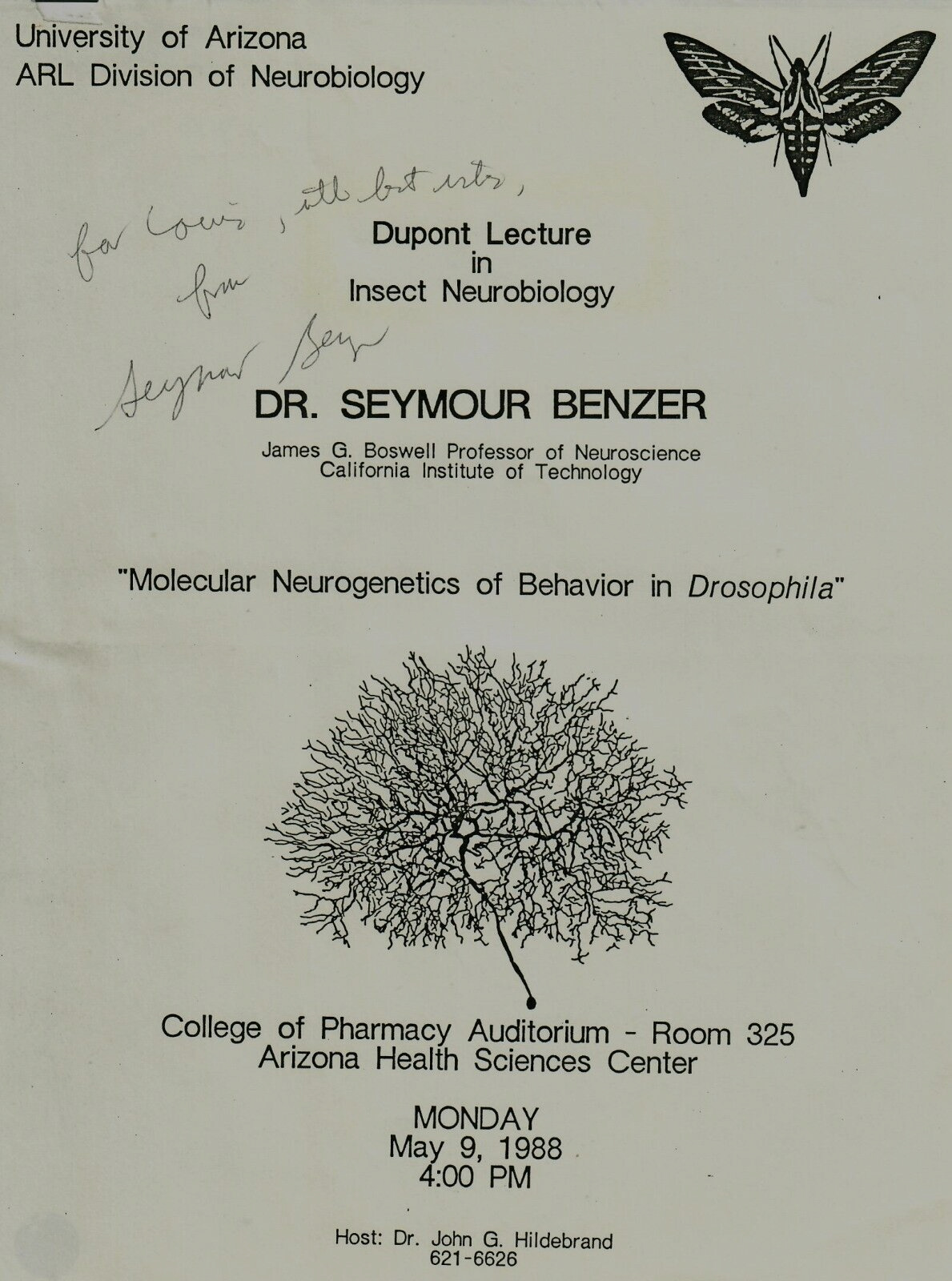"Behavioral Genetics" Seymour Benzer Hand Signed Announcement For Sale

When you click on links to various merchants on this site and make a purchase, this can result in this site earning a commission. Affiliate programs and affiliations include, but are not limited to, the eBay Partner Network.
"Behavioral Genetics" Seymour Benzer Hand Signed Announcement:
$499.99
Up for sale a RARE! "Behavioral Genetics" Seymour Benzer Hand Signed Announcement Dated 1988.
– November 30, 2007) was an American physicist, molecular biologist and behavioral geneticist. His
career began during the molecular biology revolution of the 1950s, and he
eventually rose to prominence in the fields of molecular and behavioral
genetics. He led a productive genetics research lab both at Purdue University
and as the James G. Boswell Professor of Neuroscience, Emeritus, at the California Institute of
Technology. Benzer was born in South Bronx, to Meyer B. and Eva
Naidorf, both Jews from Poland. He had two older sisters, and his parents
favored him as the only boy. One of Benzer's earliest scientific experiences
was dissecting frogs he had caught as a boy. In an interview at Caltech, Benzer
also remembered receiving a microscope for his 13th birthday, “and that opened
up the whole world.” The book "Arrowsmith" by Sinclair Lewis heavily influenced the young Benzer, and
he even imitated the handwriting of Max Gottlieb, a scientist character in the
novel. Benzer graduated from New Utrecht High School at
15 years old. In 1938 he enrolled at Brooklyn College where he majored in physics. Benzer then moved on to Purdue University to earn his Ph.D. in solid state
physics. While there he was recruited for a secret military project to develop
improved radar. He performed research that led to the development of
stable germanium rectifiers and discovered a germanium crystal
able to be used at high voltages, among the scientific work that led to the
first transistor. Upon receiving his Ph.D. in 1947, he was
immediately hired as an assistant professor in physics at Purdue. However,
Benzer was inspired by Erwin Schrödinger's book What Is Life?, in which the physicist pondered the
physical nature of the gene and a “code” of life. This catalyzed Benzer's shift
in interest to biology, and he moved into the area of bacteriophage genetics., spending two years as a postdoctoral fellow
in Max Delbrück's laboratory
at California Institute of Technology, and then returning to Purdue. At Purdue
University, Benzer developed the T4 rII system, a new genetic T4
bacteriophage rII mutants. After observing that a particular rII mutant,
a mutation that caused the bacteriophage to eliminate bacteria more rapidly
than usual, was not exhibiting the expected phenotype, it occurred to Benzer
that this strain might have come from a cross between two different rII mutants
(each having part of the rII gene intact) wherein a recombination event
resulted in a normal rII sequence. Benzer realized that by
generating many r mutants and recording the recombination one could create a detailed map of the
gene, much as Alfred Sturtevant had
done for chromosomes. Taking advantage of the
enormous number of recombinants that could be analyzed in the rII mutant
system, Benzer was eventually able to map over 2400 rII mutations.
The data he collected provided the first evidence that the gene is not an
indivisible entity, as previously believed, and that genes were linear. Benzer also proved that mutations were distributed in many different parts of a
single gene, and the resolving power of his system allowed him to discern
mutants that differ at the level of a single nucleotide. Based on his rII data, Benzer
also proposed distinct classes of mutations including deletions, point mutations, missense mutations,
and nonsense mutations. Benzer's
work influenced many other scientists of his time (see Phage group). In his molecular biology period, Benzer
dissected the fine structure of a single gene, laying down the ground work for
decades of mutation analysis and genetic engineering, and setting up a paradigm
using the rII phage that would later be used by Francis Crick and Sydney Brenner to establish the triplet code of DNA.
In addition, Benzer's mapping technique was taken up by Richard Feynman. In
1967, Benzer left the field of phage genetics and returned to the California
Institute of Technology to work in behavioral genetics.

Related Items:
"Behavioral Genetics" Seymour Benzer Signed Announcement
$349.99

